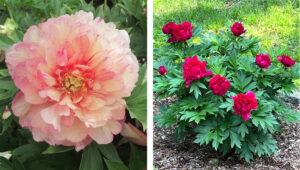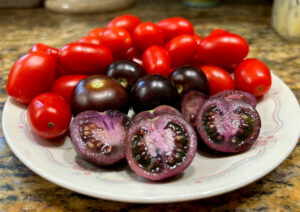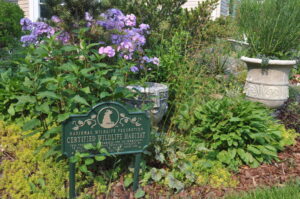The Best New Perennial Flowers of 2025
January 28th, 2025
A new line of high-performing mixed-species peonies, a super-sized new salvia, and several new varieties of pollinator favorites highlight the list of interesting new perennials debuting in the 2025 growing season.

Itoh Garden Candy peonies Candy Apple, left, and Simply Scrumptious, right. Credit: Plants Nouveau
Growers, local garden centers, and other plant experts picked the following 12 choices for my annual January four-part, best-new-plants series.
The article on best new edibles of 2025 appeared Jan. 14, while the rundown on best new annual flowers posted last week. The series ends next week with a look at the best new trees and shrubs of 2025, posting Feb. 4.
The following new perennial flowers are available online and in some plant catalogs and will start showing up in local garden centers in April.
The details:
Garden Candy series of Itoh peonies
Itoh peonies are a cross between herbaceous and tree peonies that yield the best of both worlds – bushy, disease- and deer-resistant plants with big flowers in lots of colors. They’re named after Dr. Toichi Itoh, the Japanese botanist who made the first cross decades ago.
Enter Donald Smith, a retired atmospheric research physicist who took on a retirement project of breeding new varieties of these “intersectional” Itoh peonies in new colors and double-flowered versions.
He’s been working on it since 2010 and has come up with a line of 11 impressive plants being introduced this year under the Garden Candy name by Alabama-based Plants Nouveau.
“We have deemed Don the ‘Willy Wonka of peony breeding,’” says Angela Treadwell-Palmer, Plants Nouveau’s founder and co-owner.
Treadwell-Palmer especially likes the Candy Apple variety – a double red – and the Simply Scrumptious variety – a double bloomer with lemony-peach petals and a cherry blush.
Other Garden Candy entries include Evie Jane (a double pink), Pineapple Fizz (bright yellow), and Summer Sunset (peach).
“These also do not attract those annoying ants or fall in the mud after a hard rain,” Treadwell-Palmer adds.
All of the Garden Candy varieties grow nearly three feet tall and four feet wide, die back to the ground in winter, and do well in full sun to part shade.













